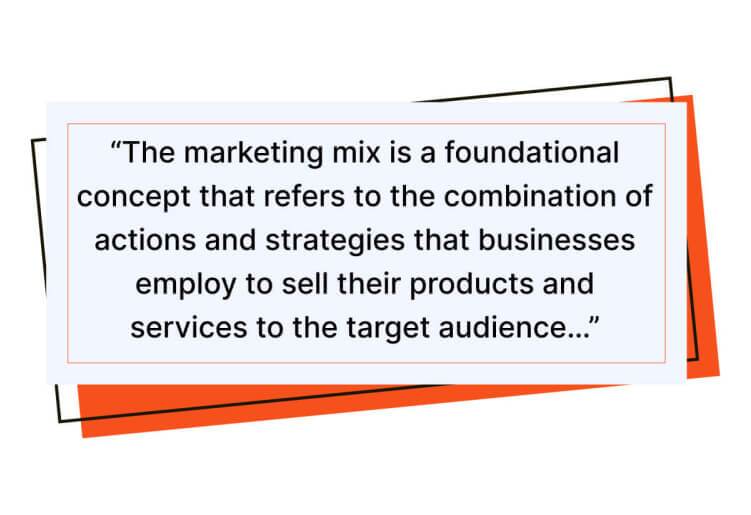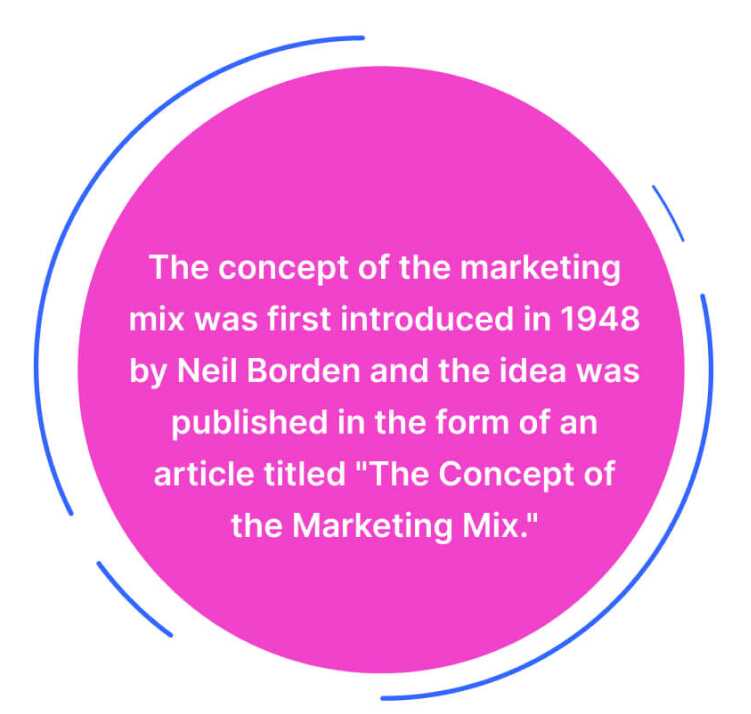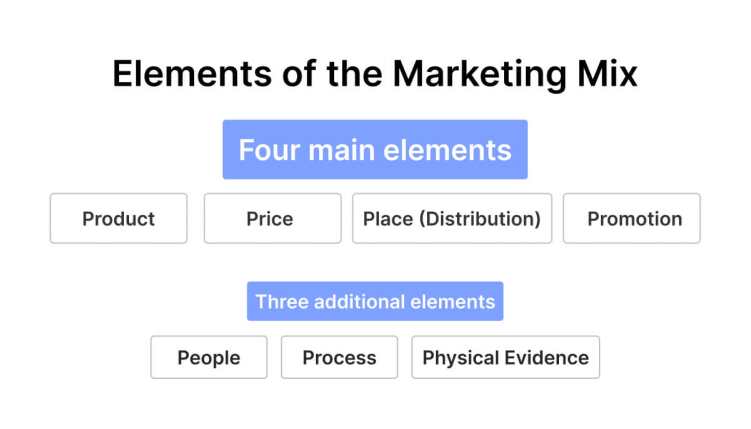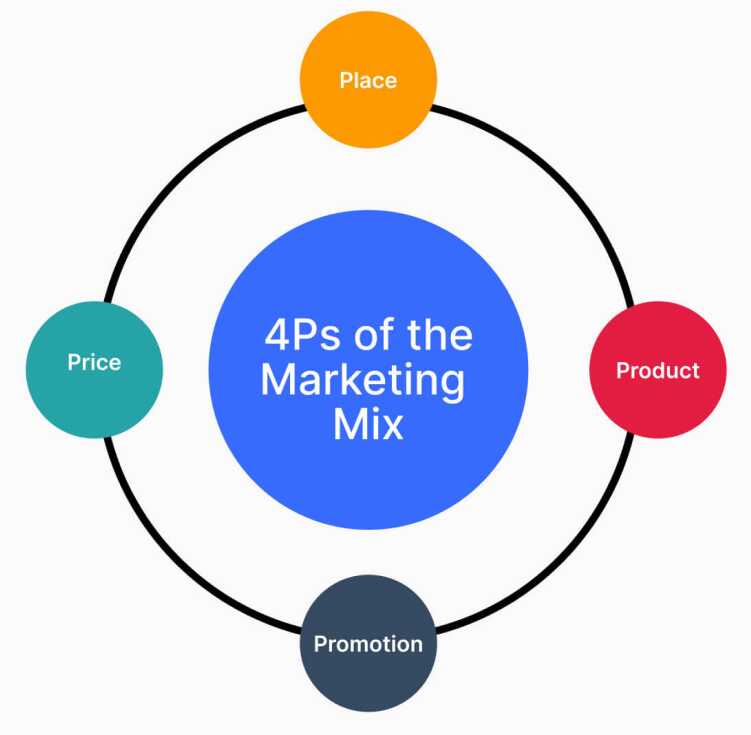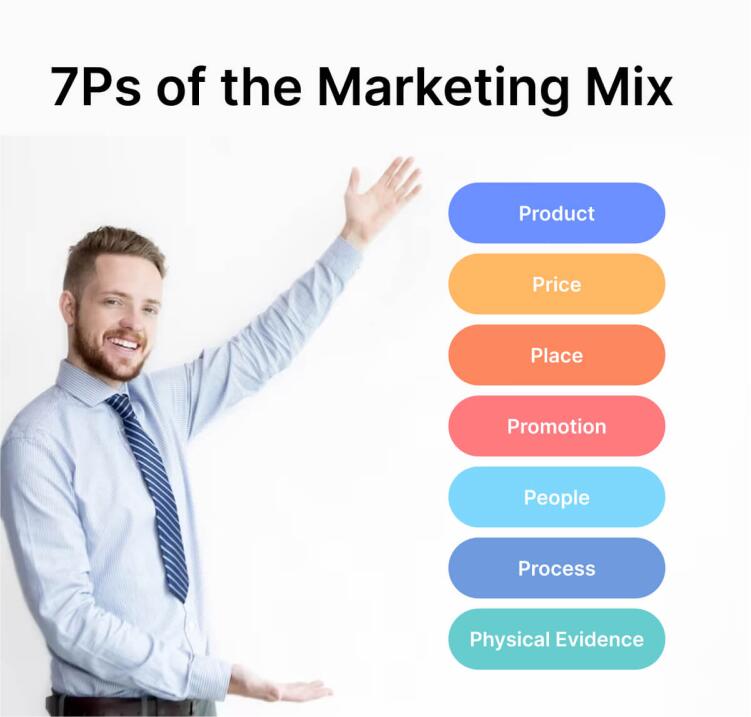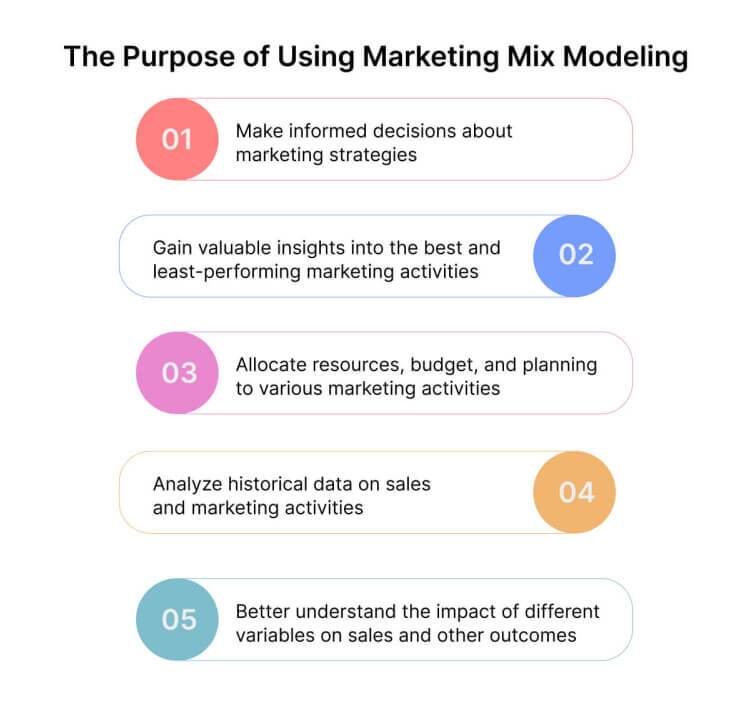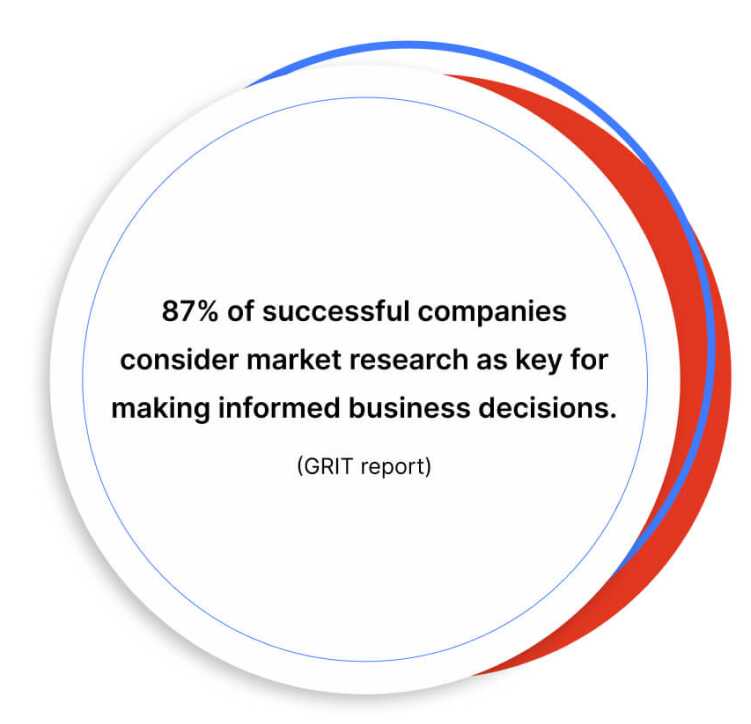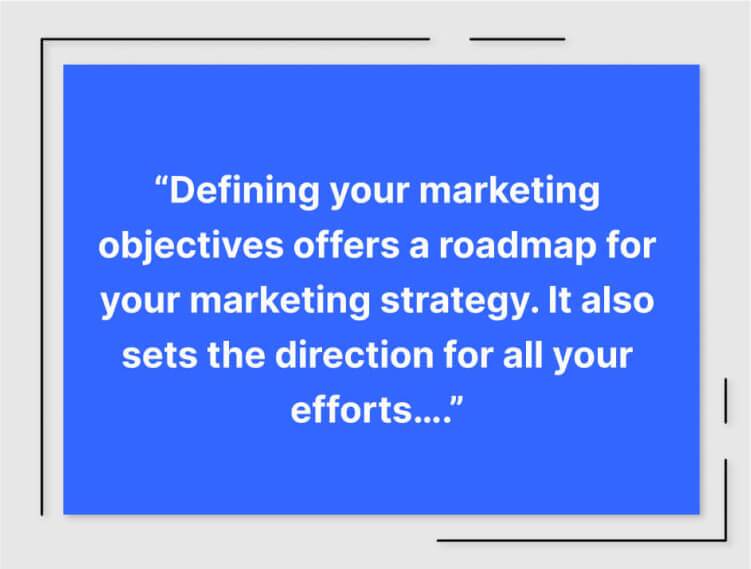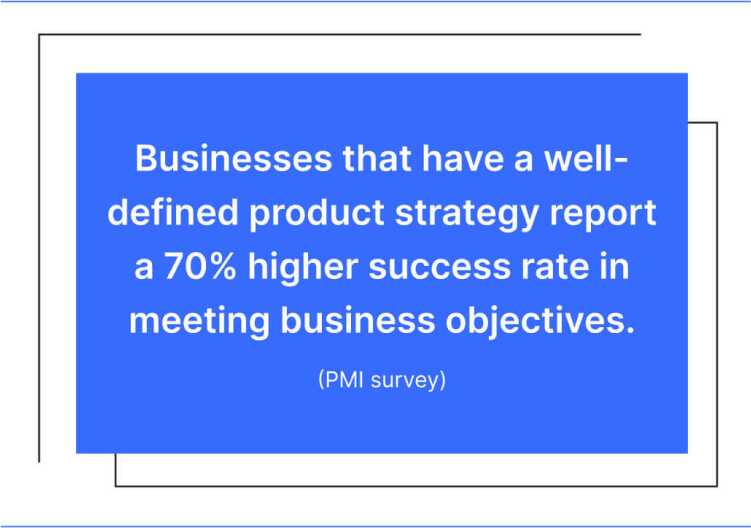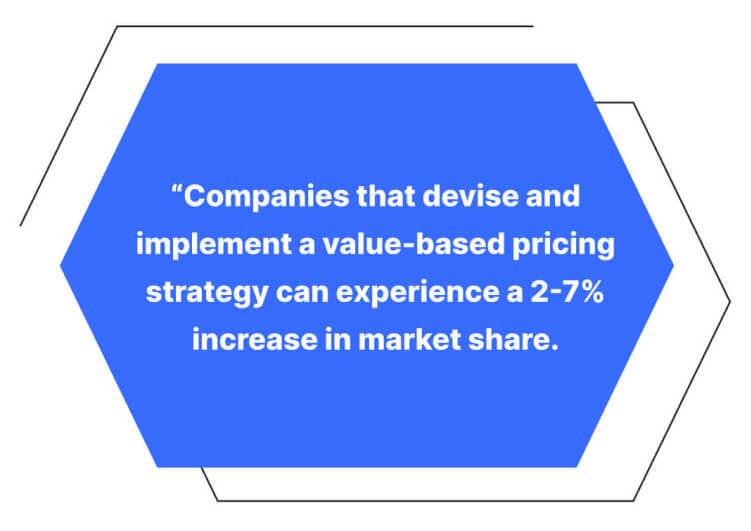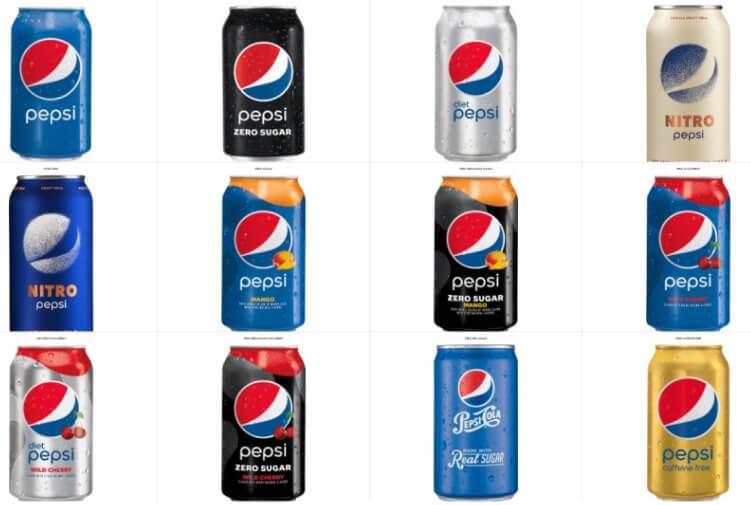Running a business was once not as complex as it is today.
In those days, marketing concepts were not popular. The primary focus was on production and sales-driven approaches. Companies just produced goods and then sold them to customers without any thought for meeting customer needs or preferences.
Things, however, started to change from the mid-20th century onwards!
The focus gradually shifted toward a more customer-driven approach in marketing. Companies realized the significance of understanding consumer needs and want. They understood that knowing customer behaviors was vital for success in the market.
This is when the concept of marketing mix evolved as a framework to develop robust strategies. Since then, businesses have become more methodical in the way they do marketing campaigns.
Today, the marketing mix is used by businesses to have an in-depth consideration of product attributes and be aware of the pricing, promotion, and distribution strategies to meet customer needs and achieve their objectives in the market.
In this blog, we will explore the marketing mix concept in detail, analyze the 4Ps and 7Ps of the marketing mix, understand the elements and examples of the marketing mix, and also look at the strategies involved.
But first, let’s get started with the definition of the marketing mix…
What is the Marketing Mix?
The marketing mix is a combination of actions and strategies that businesses employ to sell their products and services to the target audience. It’s a foundational concept in marketing that refers to elements used by companies to influence consumer behavior and effectively promote and sell products or services in the market.
The term “marketing mix” first included the 4Ps ( product, price, promotion & place) and later expanded to include the 7Ps with three additional elements ( people, packaging & process) joining the traditional ones. All the elements are interconnected and work collectively in the creation of a robust marketing plan.
“The Marketing Mix Concept” Evolution – A Timeline
- The concept of the marketing mix was first introduced in 1948 by Neil Borden, who was an American academic and a professor at Harvard Business School. The idea was published in the form of an article titled “The Concept of the Marketing Mix.”
- E. Jerome McCarthy, who was an American marketing professor, built on Borden’s work and organized the marketing mix into four key elements which were termed the “4Ps”. This framework was proposed by McCarthy in a 1960 book, titled “Basic Marketing: A Managerial Approach.”
- Later on, towards the late 20th century, marketers started to realize the need for adding additional Ps to the traditional marketing mix to address the modern times and soon, the “4Ps” got expanded into the “7Ps”.
Elements of the Marketing Mix
The marketing mix involves certain elements that a business should consider and implement in developing a robust marketing strategy. These elements are vital for creating an effective and successful marketing plan for promoting the products and services to the target audience. Careful consideration of each element and an understanding of how they interact with one another is essential for a cohesive marketing strategy.
The traditional marketing mix includes four main elements:
- Product
- Price
- Place (Distribution)
- Promotion
In recent years, the traditional marketing mix has been expanded to include additional elements:
- People
- Process
- Physical Evidence
What are the 4Ps of Marketing Mix?
The 4Ps of the marketing mix are a basic framework that businesses use for designing and implementing marketing strategies. They represent the four key elements that can be controlled to influence the purchasing decisions of the target audience. For marketers, the 4Ps work as combined tools and methodologies for achieving their marketing objectives.
The 4Ps stand for –
1. Product
The product is what your company sells or what your make available to the consumer. It can include goods or services. Ideally, the product or service you offer should meet existing consumer demand or should enhance the customer experience.
When you’re working on a product, you need to consider some questions –
- What is your product?
- What does it do?
- What makes your product unique or special?
- Does it meet a need or offer a novel experience?
- Who does your product target?
- How is your product different from others?
- How can your product win over customers?
- What are the ways your product can beat the competition?
2. Price
Price is the cost of a product or service, or it is the amount of money you charge customers for your offerings. Setting up the right price can result in the most amount of sales. More importantly, the price you fix for the product should be related to its real and perceived value.
Pricing can have a big impact on the overall success of a product or service. If the price is too high, very few people will likely buy it. Similarly, if the price is too low, it might also impact sales as then many may doubt the quality of your product.
To identify and fix the right price, you should consider several factors:
- Who is your target audience, and whether they are willing to pay that much for your product?
- What is the price range of the same product/s your competitors have set?
- What is the price range your target audience is most comfortable with for the product?
- Is the product pricing too high, or is it too low?
- What price is the right match for your audience?
3. Place
It refers to how you make your product or service available to your target audience. It also involves the distribution channel you choose to let your offers reach the audience. The place is a key element of the marketing mix and it involves decisions related to the kind of distribution channels you decide, the location of the stores, logistics, and inventory management.
Like price, you need to find the right place to sell and market your product. If you choose a place your target customers don’t visit, it can adversely impact your sales target. The right place will connect you with your audience and this can help boost sales.
When you decide on the best place to market and sell your product, consider these things:
- What are the places your target audience frequently shops?
- Where are your competitors selling their products?
- What distribution channels are the best fit to reach the target audience?
- What are the shopping habits and preferences of your target audience?
- Do you need a sales team, or will self-service be adequate?
4. Promotion
Promotion is how you advertise your product and service. It includes decisions related to your promotional strategy. The purpose of devising a promotion strategy is to show your audience why they need the product and what problem the product will solve for them. The key is to convince consumers why they should spend money on your product.
Whether you will use social media or deploy an SEO strategy or leverage a PR campaign or any other advertising tactic, all these will be major considerations when you decide on the promotion of your product. You also need to be sure whether you will focus more on traditional channels or emphasize digital marketing.
Key questions to ask when you consider product production:
- What marketing channels are the best fit for your product?
- Can the audience convert with the promotional approach you adopt?
- How are your competitors attracting the same set of audiences?
- What is the best time and best way to reach your target audience?
- Which marketing channels are most effective for promoting your product?
What are the 7Ps of Marketing Mix?
The traditional 4Ps of the marketing mix had Product, Price, Place, and Promotion as the key elements. Later on, an extended version was introduced which was called the 7Ps and it had three additional elements, People, Process, and Physical Evidence. Now businesses can use the 7Ps framework to develop a more holistic marketing strategy and consider the broader scope of the marketing activities.
The 7Ps of the marketing mix include –
1. Product
It refers to the product or service a business offers to its customers and this element is the same as in the traditional marketing mix. All the decisions regarding the product design, features, quality, packaging, and position come under this. The real focus of this element for businesses is to create or develop a product that best meets the customer’s needs and ensures value for them.
2. Price
The price element of the marketing mix involves all the considerations related to setting the right price for the product or service. All the pricing-related decisions, including the methods to reach the price, and objectives for the pricing set, discounts, come under this element.
3. Place
The focus of this element is on how a business should make the product or service available to customers. From deciding the distribution channels to choosing the location to logistics to inventory management, All the decisions that help the product reach the target audience effectively come under this element.
4. Promotion
Promotion refers to that element of the marketing mix where all the decisions regarding the promotion of the product or service are taken. How a company plans to communicate the value to the target audience and what methods it selects are the key considerations herein. Whether a business puts faith in the traditional form of advertising or invests in the digital-driven approaches, whether it chooses direct marketing or social media, or email, this element involves all these considerations.
5. People
The “people” is a key element of the marketing mix that refers to the personnel involved in helping a business deliver the product or service to the target audience. It involves decisions related to any person that comes in contact with the customer even indirectly. For a business, this element is important as it emphasizes the need to hire the best talents and manpower for all levels, including marketing, sales, and customer service.
6. Process
This element of the marketing mix refers to the steps and procedures involved in delivering a product or service to the target audience. It involves all the systems, procedures, and workflows that combine together and help in taking the product to the intended audience. In this element, the key decisions are to make the processes streamlined and smooth so that operational efficiencies can be improved.
7. Physical Evidence
The “physical evidence” element of the marketing mix refers to all the tangible and intangible cues that the target audience may use to analyze and evaluate a product or service. Based on those cues, customers often form perceptions about a brand and show loyalty, or lack of it, thereof. Factors like branding, packaging, store or service environment, reviews & testimonials, communication materials, awards, etc. come under this.
What is Marketing Mix Modeling (MMM)?
Marketing mix modeling is related to the 4Ps as its purpose is to help businesses determine how much success can be generated by using each factor of the marketing mix. It can also forecast future success a business can achieve by optimizing the marketing mix.
So, marketing mix modeling is a statistical analysis technique to measure the impact of various marketing variables on sales and other KPIs. By using MMM, a business can understand how different elements of the marketing mix contribute to the overall business results and outcomes.
The purpose of using this modeling is to –
- Help businesses make informed decisions about their marketing strategies
- Gain valuable insights into the best and least-performing marketing activities and then allocate resources, budget, and planning in accordance
- Analyze historical data on sales and marketing activities to better understand the impact of different variables on sales and other outcomes.
Benefits of Marketing Mix Modeling
- Allows businesses to make data-driven decisions
- Proves helpful in allocating marketing budget more effectively
- Enables the measure of marketing activities and campaigns
- Guides in long-term strategic planning
Limitations of Marketing Mix Modeling
- Heavy reliance on assumptions and simplifications
- No considerations for real-world marketing dynamics
- Marred with lag effects for industries with longer sales cycles
- Lack of accountability for external factors
Process Involved with Marketing Mix Modeling
The marketing mix modeling involves a methodical process with several key steps, including –
Step 1 – Collect Data
First of all, a business needs to collect data on expenditures ( sales, marketing, and ads) and gather other key variations for a specific period.
Step 2 – Prepare the Data
Once the data is collected, the next step is to prepare the data by cleaning, organizing, and processing it. This preparation will help ensure accuracy and consistency.
Step 3 – Use Statistical Techniques
Now that the data is available, it’s easy to use statistical techniques to measure the link between marketing variables and sales. Other performance metrics can also be quantified based on the specific needs of the business.
Step 4 – Build the Model
It’s time to build the model to represent the relationships between variables and outcomes.
Step 5 – Analyze the Results
When the model is ready, it becomes easy to do interpretations and gain insights. Results can be analyzed to understand how effective have been different marketing elements and how much they have contributed to the overall success and performance.
Step 6 – Optimize the Analysis
The insights can be used to make informed decisions about the kind of marketing strategies a business wants to adopt in the future and plans to allocate resources for desired results.
Steps to Develop a Successful Marketing Mix Strategy
A successful marketing mix strategy is about creating a robust marketing plan by finding the right balance between the four elements of the 4Ps. Since the marketing mix is not a one-size-fits-all approach, the strategy you devise needs to be in tune with your specific industry and target audience. It’s equally important that your marketing mix strategy is in alignment with your business objectives, and is also relevant.
Here are the steps to develop and implement a successful marketing mix strategy –
1. Market Research
Detailed market research is the starting point in the journey to creating an effective marketing mix strategy for your business. It will get you better equipped to make informed decisions about various elements of the 4Ps so that all the activities are geared toward the target audience. When you conduct thorough market research, it gives you insights into the target market as you collect and analyze data in regard to understanding the needs, behaviors, and preferences of your audience.
Key Aspects
- Understand the demographics of your target audience, analyze their psychographics, identity the geographic locations, and study behavioral analysis
- Segment the audience into distinct groups so that you can tailor the marketing mix to the unique needs of each segment
- Choose the segment you want to prioritize
- Do a competitive analysis and then understand the market trends and dynamics
- Conduct a SWOT analysis to assess the factors that could impact your marketing mix strategy
- Develop buyer personas to get a clear idea of your ideal customers
2. Define Your Marketing Objectives
Defining your marketing objectives offers a roadmap for your marketing strategy. It also sets the direction for all your efforts. When your objectives are clear and well-defined, you are better equipped to make informed decisions at each stage of the marketing mix development and implementation process. So, make sure you clearly articulate what you want to achieve through your B2C or B2B marketing efforts.
Key Aspects
- Set a SMART objective so that you can measure and achieve a specific or relevant goal in a time-bound manner
- Identity KPIs to measure the effectiveness of your marketing mix strategy
- The objectives you set should consider the needs and preferences of your target audience and it should also reflect the positioning you want to convey to the audience
- Make sure your objectives are aligned with the budget and resources you have
- Regularly track progress and compare the results with the objectives
3. Identify Your USP ( Unique Selling Proposition)
When you design a marketing mix strategy, you should identify your USP so that you can be clear about your communication and promotion strategy. More so, you can promise to offer value to the audience only when you are aware of what makes your product and services different from others. By developing a strong USP, you will be able to create a solid brand identity in the market and gain a competitive edge.
Key Aspects
- Evaluate your product or service to determine how it is unique and different from others in the market
- Identify how your products can solve the problem or the pain points of your intended customers
- Craft a clear value proposition to show what customers will get out of your product or service
- Strike a balance between benefits and features when you highlight your product in the market
- Use the power of the emotional aspect of your USP to create a strong bond with customers
- Now let your USP is communicated across marketing channels
4. Develop Your Product Strategy
Developing your product strategy is a key step in devising an effective marketing mix strategy. When you’re developing a product strategy, the focus should be on seeking an alignment with your target audience’s needs and preferences. It will set a solid foundation for your marketing mix strategy and ensure the success of your marketing efforts.
Key Aspects
- Create a product or service that fixes your target audience’s problems and pain points
- Make sure your product is both, attractive as well as useful to your customers
- Ensure that your offers meet customer expectations and industry standards
- Position your product in a way that fits well with the perceptions of your audience
- Focus on offering a seamless and positive experience to customers at each touchpoint
5 – Set Your Pricing Strategy
Did you know that the average SaaS company gives just 6 hours for determining its pricing strategy? Well, you should not take pricing lightly because it’s a big factor.
Setting your pricing strategy is an essential step when you develop a marketing mix strategy. It will impact your profit and revenue. More so, pricing is a big factor in the way customers perceive your product and base their decision on whether to buy or not.
It’s therefore important that your pricing strategy is in direct match to the value proposition. Your pricing strategy should remain attractive to the audience and align with the market dynamics.
Key Aspects
- Consider all your production costs to get a clear idea of your expense management process.
- Analyze the pricing strategies of competitors
- Decide how you want to position the product – a value-added option, a premium option, or in between.
- Avoid cost-based pricing and rather price the product based on the kind of perceived value it offers
- Choose a pricing model that suits your business goals and then run pricing surveys or experiments
- Consider dynamic pricing that is adjustable to the market dynamics and sets consistent pricing across channels
6. Plan Your Distribution Strategy
In this step, you need to determine how you intend to reach your target audience and deliver your product or service in a smooth manner. You need to select the distribution channel you want to leverage and also consider customer preferences along the way. The goal is to devise a distribution strategy that boosts the overall customer experience.
Key Aspects
- Identify the appropriate channels to reach your intended market
- Analyze the available channel options such as direct sales, retail partners, etc.
- The distribution channel you choose must align with the kind of market positioning you want
- Adopt an omni-channel approach so that all the channels are integrated and offer a seamless experience to customers
7. Create Your Promotion Strategy
Planning and executing promotional activities is vital for a business for generating interest in their products or services and raising awareness. By using the right mix of promotional activities, you can engage with your audience and drive them to make a purchase. The key is to devise or develop a cohesive messaging strategy that consistently communicates things across channels.
Key Aspects
- Allocate budget across channels and based on your goals
- Choose channels that fit well with your business goals and audience profile
- Use paid channels to reach a broader audience
- Run loyalty programs and reward loyal customers
- Build trust with user-generated content
Marketing Mix Examples
1. Pepsi Marketing Mix Example
Pepsi has been an iconic soft drink brand for a long time. In a competitive market where Coca-Cola is the leading player, Pepsi stands out for its unique marketing approach.
Its product is mostly carbonated soda drinks with different flavors and the pricing it follows is reasonable and based on the competition. While Pepsi products are available in over 200 countries, one can’t discount the role its ad campaigns ( that run using all types of channels) have played in making it the brand it is today.
Pepsi stands out in the way it positions itself in a competitive market and projects an image of a young and modern brand. Naturally, so, it targets the young audience.
2. Starbucks Marketing Mix Example
Any mention of the word “Coffee” is bound to bring the image of Starbucks to mind. Such is the way this company has redefined how people see coffee, and enjoy it too!
As we know, Starbucks sells a variety of coffee drinks and customers are more than happy to pay a premium price to buy its coffee. Its store is available in 80 countries and they are promoted as a place where people can feel they belong.
The company leverages different marketing channels for brand promotion and sticks with the iconic logo and descriptions that are quite a hit with the audience. It positions itself as a brand for middle to upper-class individuals.
3. Apple Marketing Mix Example
Apple is simply the world’s most valuable and unique brand. It not only leads in terms of sales and market capitalization but also edges ahead others in terms of showcasing creating excellence with a range of products.
Apple’s marketing mix includes a wide variety of quality products such as iPhones, Macbooks, Apple Watches, and iPads. The company uses a premium pricing model and makes available products from both on and offline stores.
Its campaigns have always put it above and beyond others, as it subtly uses diverse channels and events to maintain its leadership position. While its packaging is simple but visually appealing, it is positioning – which is centered on simplicity and creativity – does the trick.
Final Thoughts
Planning and executing effective marketing strategies is essential for business growth. This is where the marketing mix framework helps. Your business will also need the support of quality tools and technologies to make your marketing efforts as successful as they should be.
At REVE Chat, we understand the role advanced techs like AI and chatbots play in driving marketing strategies and efforts.
You can sign up here and see how some of our engagement tools can contribute to the effectiveness of your marketing mix strategies.

